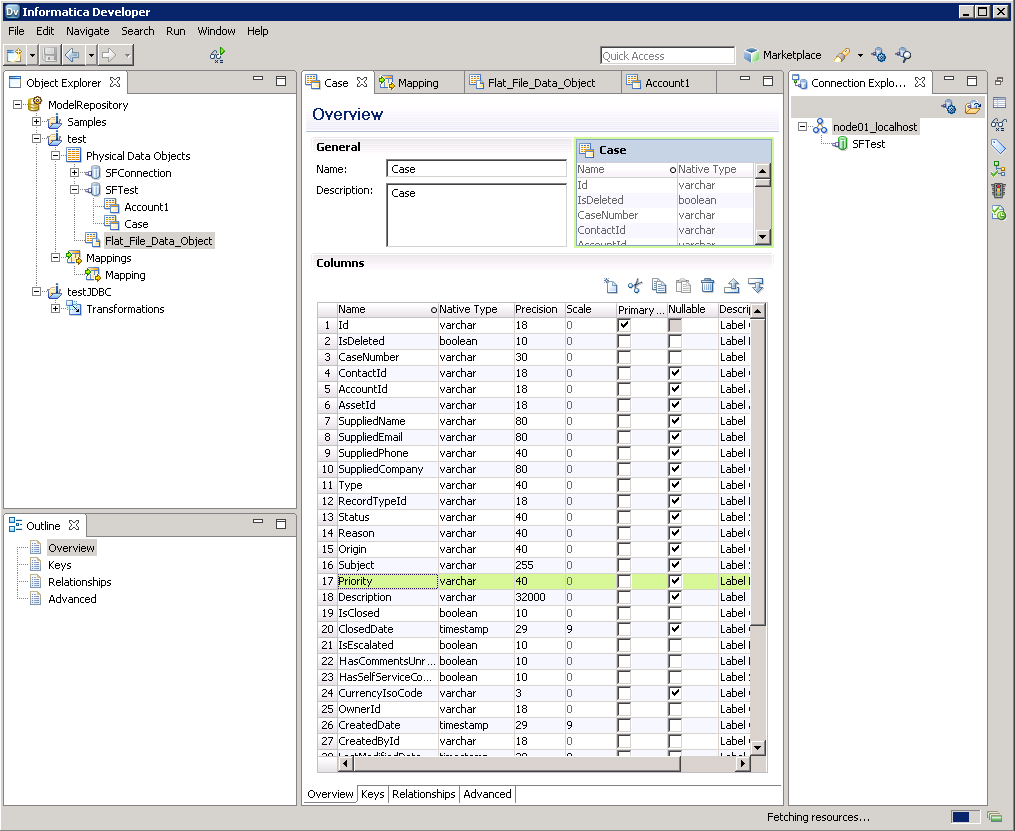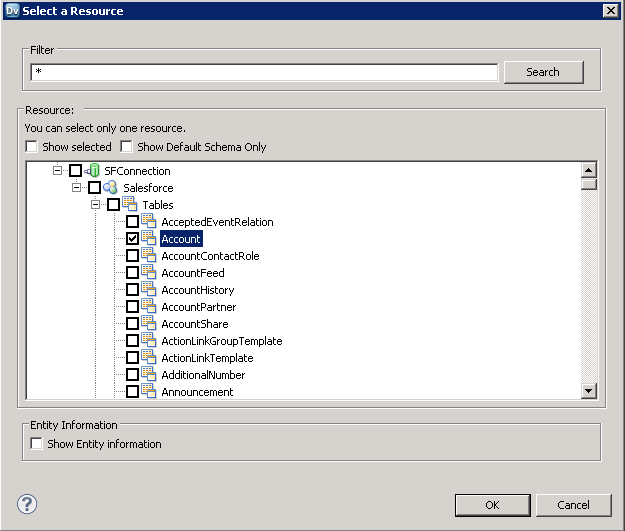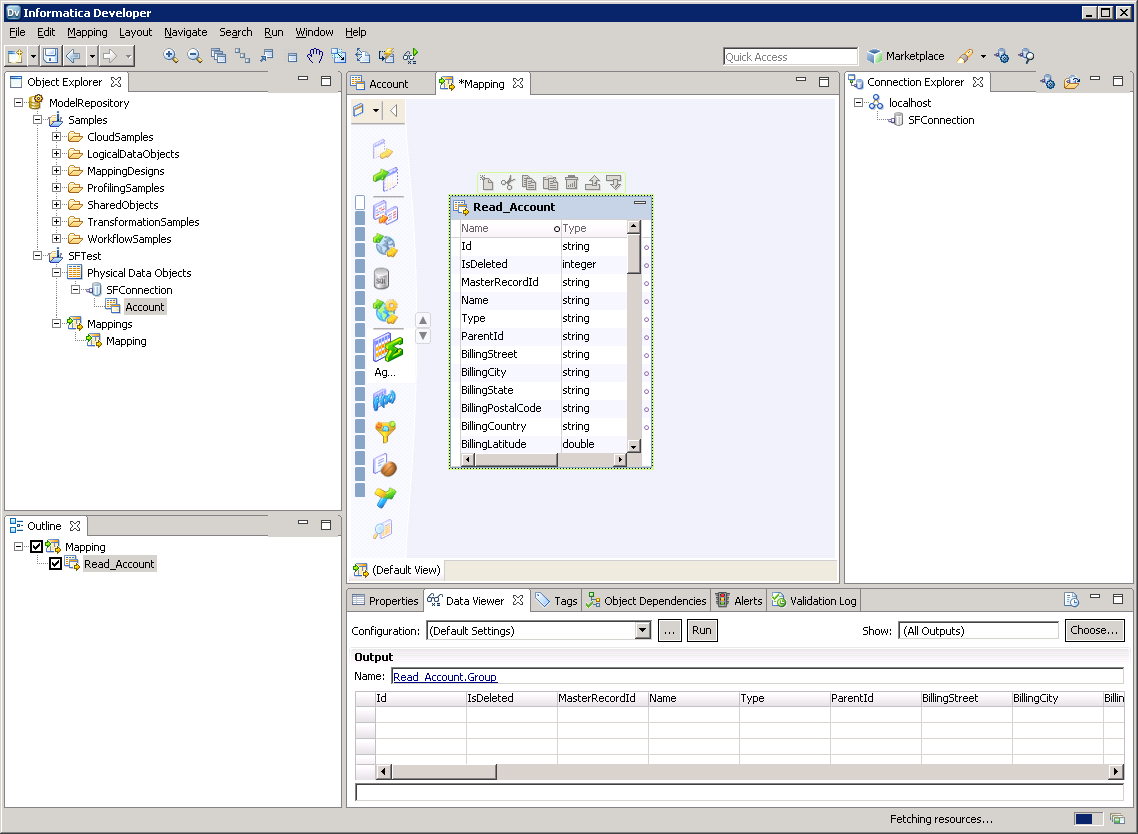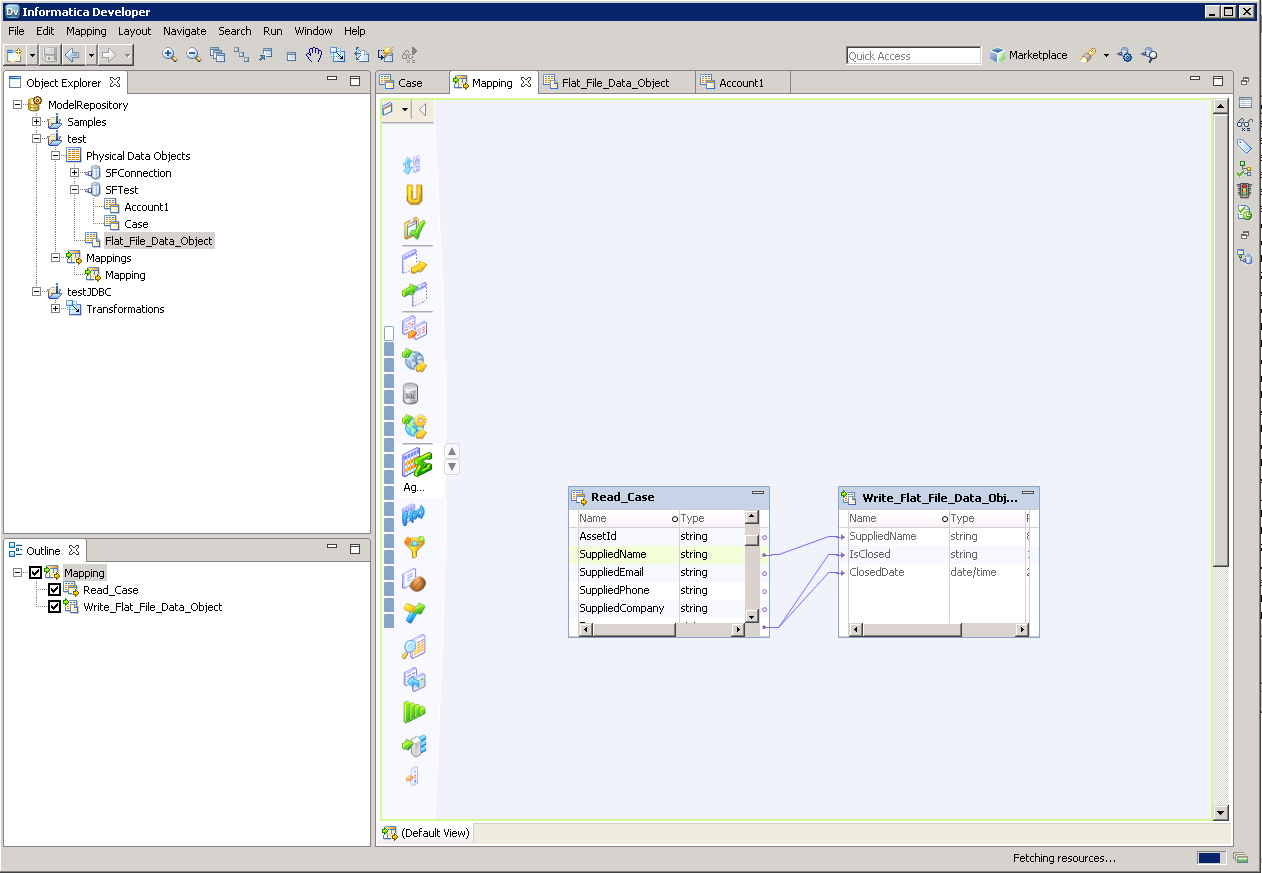Discover how a bimodal integration strategy can address the major data management challenges facing your organization today.
Get the Report →Create Informatica Mappings From/To a JDBC Data Source for Procore
Create Procore data objects in Informatica using the standard JDBC connection process: Copy the JAR and then connect.
Informatica provides a powerful, elegant means of transporting and transforming your data. By utilizing the CData JDBC Driver for Procore, you are gaining access to a driver based on industry-proven standards that integrates seamlessly with Informatica's powerful data transportation and manipulation features. This tutorial shows how to transfer and browse Procore data in Informatica PowerCenter.
Deploy the Driver
To deploy the driver to the Informatica PowerCenter server, copy the CData JAR and .lic file, located in the lib subfolder in the installation directory, to the following folder: Informatica-installation-directory\services\shared\jars\thirdparty.
To work with Procore data in the Developer tool, you will need to copy the CData JAR and .lic file, located in the lib subfolder in the installation directory, into the following folders:
- Informatica-installation-directory\client\externaljdbcjars
- Informatica-installation-directory\externaljdbcjars
Create the JDBC Connection
Follow the steps below to connect from Informatica Developer:
- In the Connection Explorer pane, right-click your domain and click Create a Connection.
- In the New Database Connection wizard that is displayed, enter a name and Id for the connection and in the Type menu select JDBC.
- In the JDBC Driver Class Name property, enter:
cdata.jdbc.api.APIDriver - In the Connection String property, enter the JDBC URL, using the connection properties for Procore.
Start by setting the Profile connection property to the location of the Procore Profile on disk (e.g. C:\profiles\Procore.apip). Next, set the ProfileSettings connection property to the connection string for Procore (see below).
Procore API Profile Settings
To authenticate to Procore, and connect to your own data or to allow other users to connect to their data, you can use the OAuth standard.
First, you will need to register an OAuth application with Procore. You can do so by logging to your Developer Account and going to Create New App. Follow all necessary steps to register your app. First you will need to create a new version of Sandbox Manifest and then promote it to Production in order to get your Production Crendentials. Your Oauth application will be assigned a client id and a client secret.
After setting the following connection properties, you are ready to connect:
- AuthScheme: Set this to OAuth.
- InitiateOAuth: Set this to GETANDREFRESH. You can use InitiateOAuth to manage the process to obtain the OAuthAccessToken.
- OAuthClientId: Set this to the client_id that is specified in you app settings.
- OAuthClientSecret: Set this to the client_secret that is specified in you app settings.
- CallbackURL: Set this to the Redirect URI that is specified in your app settings
Built-in Connection String Designer
For assistance in constructing the JDBC URL, use the connection string designer built into the Procore JDBC Driver. Either double-click the JAR file or execute the jar file from the command-line.
java -jar cdata.jdbc.api.jarFill in the connection properties and copy the connection string to the clipboard.
![Using the built-in connection string designer to generate a JDBC URL (Salesforce is shown.)]()
A typical connection string is below:
jdbc:api:Profile=C:\profiles\Procore.apip;Authscheme=OAuth;OAuthClientId=your_client_id;OAuthClientSecret=your_client_secret;CallbackUrl=your_callback_url;InitiateOAuth=GETANDREFRESH
Browse Procore Tables
After you have added the driver JAR to the classpath and created a JDBC connection, you can now access Procore entities in Informatica. Follow the steps below to connect to Procore and browse Procore tables:
- Connect to your repository.
- In the Connection Explorer, right-click the connection and click Connect.
- Clear the Show Default Schema Only option.
![The driver models Procore entities as relational tables. (Salesforce is shown.)]()
You can now browse Procore tables in the Data Viewer: Right-click the node for the table and then click Open. On the Data Viewer view, click Run.

Create Procore Data Objects
Follow the steps below to add Procore tables to your project:
- Select tables in Procore, then right-click a table in Procore, and click Add to Project.
- In the resulting dialog, select the option to create a data object for each resource.
- In the Select Location dialog, select your project.
Create a Mapping
Follow the steps below to add the Procore source to a mapping:
- In the Object Explorer, right-click your project and then click New -> Mapping.
- Expand the node for the Procore connection and then drag the data object for the table onto the editor.
- In the dialog that appears, select the Read option.
![The source Procore table in the mapping. (Salesforce is shown.)]()
Follow the steps below to map Procore columns to a flat file:
- In the Object Explorer, right-click your project and then click New -> Data Object.
- Select Flat File Data Object -> Create as Empty -> Fixed Width.
- In the properties for the Procore object, select the rows you want, right-click, and then click copy. Paste the rows into the flat file properties.
- Drag the flat file data object onto the mapping. In the dialog that appears, select the Write option.
- Click and drag to connect columns.
To transfer Procore data, right-click in the workspace and then click Run Mapping.
![The completed mapping. (Salesforce is shown.)]()










